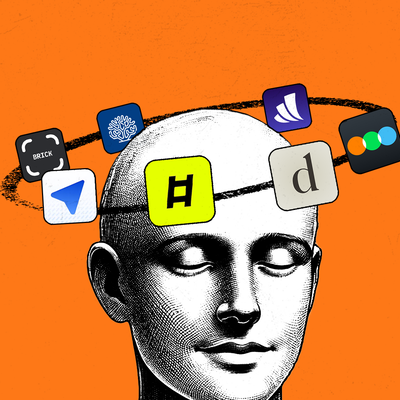.08.31_AM.png)
Was this newsletter forwarded to you? Sign up to get it in your inbox.
The fundamental promise of AI is that it will dramatically reduce the cost of making any product that has a digital component.
Writers such as myself love to publicly wring our hands about how LLMs’ rapidly improving writing ability may soon put us out of a job. In a satisfyingly ironic twist of fate, though, it’s the field of software engineering that has so far been hit hardest. The very people inventing the technology that may put many knowledge workers out of a job have been among the first to experience disruption, with software engineering job postings at a five-year low. This change is partially due to the tens of billions of dollars that have been invested in building AI coding tools, which have proven incredibly effective.
These startups have grown faster than I have ever seen in my career in the tech industry. There are individual companies in tech history that have grown at somewhat similar rates, but I’ve never seen it happen to so many organizations in the same category:
- Cursor went from $1 million to $100 million in annualized recurring revenue (ARR) in less than 12 months.
- Coding agent startup Lovable grew to $10 million in ARR two months after launch.
- Anthropic’s Claude series of models are best in class at coding and have seen explosive growth—growing 40 percent this year alone by hitting $1.4 billion in annualized revenue.
As such, automated coding tools are a useful litmus test for what happens to the rest of us as the models improve. What does work automation look like? What kind of companies are winning? Even if you don’t code, you should care about our brothers and sisters of the coding faith—they are the over-compensated sacrificial lambs whose blood sacrifice will help us divine the future.
These new tools teach us three things:
- Software wins on the basis of what work it replaces and where in the tech stack it resides.
- There are only two choices that matter: whether to build a model, and how to position your product relative to your peers.
- Beware AI revenue (but not for the reasons you think).
Let’s unpack them.
What makes these companies so successful?
AI can either integrate into an existing developer’s workflow (i.e., help me write the exact code I want faster) or replace the need for the developer (i.e., make an application that does something I want).
You’ll note that both of these jobs-to-be-done are tool agnostic. “Write code gud” or “me no want to do spreadsheet automation” are things that many other existing solutions have attempted to tackle. This matters far more than you might think.
Typically, when people buy software to use at their company, they aren’t looking just at what that software can do. Not only does it need to do a particular thing, but it also has to work within the context of an existing software stack and how the employees use them. Just as you would never buy budgeting software that didn’t integrate with your credit card, neither will an enterprise purchaser buy an expense management tool that doesn't talk to their accounting system.
It is remarkable how many founders I meet that get this wrong, so it bears repeating: Users need to understand exactly how your new boondoggle fits into their existing workflows.
The Only Subscription
You Need to
Stay at the
Edge of AI
The essential toolkit for those shaping the future
"This might be the best value you
can get from an AI subscription."
- Jay S.
Join 100,000+ leaders, builders, and innovators

Email address
Already have an account? Sign in
What is included in a subscription?
Daily insights from AI pioneers + early access to powerful AI tools









Comments
Don't have an account? Sign up!
Great thinking, thanks for sharing. I agree with most points but are left wondering if the change these tools are causing are not considered enough.
Engineering doesn't happen in isolation - it's embedded in a complex web of roles, processes, and dependencies. When AI simultaneously transforms the work of designers, PMs, and other collaborators, the entire workflow landscape shifts.
This creates a moving target effect that complicates your thesis. Today's seamless AI integration might become tomorrow's friction point as adjacent roles evolve their own AI-augmented workflows. The "perfect fit" for today's context may quickly become outdated.
While coding appears context-light in terms of explicit instructions, real-world software engineering is deeply context-heavy when considering organizational knowledge, system design choices, and team dynamics.
This might actually create new types of moats and I am rooting for all the how new startups to figure this out. I think AI-human collaborative frameworks that span multiple roles maybe even going into org design are needed here. Thinking much bigger than just engineering itself.
What do you think?